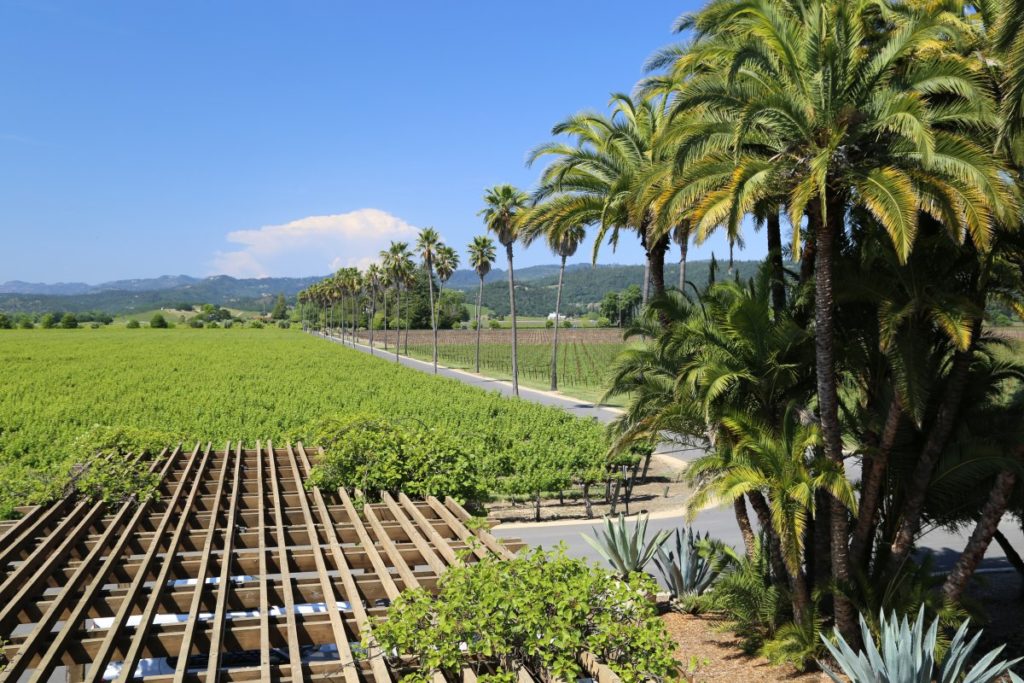Like Bordeaux, Tuscany, and Rhodes, Napa Valley is considered one of the most magical places in the world for wineries. To the eye, its expansive fields of grapevines, glittering golden sun, rolling hills, and a variety of landmarks make it look like a divine creation designed specifically for winemaking. And it’s essentially true, as the valley has an incredibly rare combination of natural and historical elements that make it such a treasure trove in viticulture.
While first-class wines and the winery experience draw tourists and locals from the surrounding areas to the vineyards, it’s everything else that Napa offers that keeps them coming back. Like when you get sweepstakes coins for free, Napa Valley’s one-of-a-kind complete sensory experience is the perfect getaway from the daily grind.
Curious to know what makes it one of California’s most iconic wine regions? Keep reading!
Geography and Climate
Just 50 miles northeast of San Francisco is “Wine Country,” the broader region in which Napa Valley is located. It’s made up of several cities, towns, and valleys that are associated with producing Californian wines. Napa Valley is a designated American Viticultural Area, providing an official geographical area for producing grapes for wine. Its Mediterranean climate, with wet and warm winters and hot, dry summers, sets the ideal scene for fruit to grow.
With only 2% of the earth boasting this type of climate, places like Napa Valley are few and far between. The coastal fog contributes to cooling, while the mountain ranges create denser air to warm the region, and the dramatic diurnal shifts allow for that highly necessary slow ripening of grapes. The many microclimates formed by these geological formations all create incredibly distinct growing conditions, paving the way for such a large variety of wines.
Soil Diversity
What makes the valley so incredible is its more than 100 diverse soil variations—50% of the world’s types. Over time and thanks to so many geological happenings, growers are able to take advantage of calcium-rich soil by the bay, volcanic soil by the hillsides, and many more types. Not only does this diversity foster sound grape growing and vine variety, but it also produces nuanced flavors for finished products. It also presents both opportunities and challenges for winegrowers, as many of the growing conditions are quite demanding and require tight management. But naturally, with such unique quality comes the need for effort.
History and Culture
Although the valley was wild with grapes, it was a settler who discovered its true potential. The first official Napa Valley grapes were planted almost two centuries ago, in 1839. And just a few decades later, the region continued to expand as a dedicated winery area, with over 140 operational wineries in 1889. Napa’s wines have always been top-tier, but one particular event gave them worldwide recognition.
A blind taste test at the Paris Tasting of 1976 put the best wines of France’s Burgundy and Bordeaux up against that of Chardonnay and Cabernet Sauvignon, with judges giving top honors to Chateau Montelena Chardonnay and Stag’s Leap Wine Cellars Cabernet Sauvignon. The French are immensely proud of their wines, but the wines of Napa Valley rivaled and beat the finest French offerings at their own game. That day, Napa Valley became one of the world’s best wine regions.
People enjoy Napa Valley for its approachable and welcoming atmosphere, making it a destination for both casual wine drinkers and distinguished sommeliers to explore. It has a whopping 400 wineries and 90 tasting rooms, allowing visitors to choose their own experiences. With festivals, castle tours, national parks, local boutiques, exhibitions, hot air balloons, spas, luxury spaces and amazing hikes to complement your wine journey, Napa Valley can become an entire adventure on its own.
Innovation and Sustainability Initiatives
Napa Valley established itself as a sustainability leader early on, with America’s first-ever agriculture preserve located there. Wine merchants and growers have imposed initiatives surrounding environmental leadership ever since, setting the standard for the valley’s wine industry to become the most highly regulated in the world. That’s right—even more regulated than many of those in Europe.
The region’s natural beauty and propensity to stay green means it has paved the way for many eco-friendly hotels, restaurants, and, of course, wineries. In fact, there are over 90 Napa Green Certified Wineries, which make up 40% of all sustainable wineries in the state. Today, the Napa County Agricultural Preserve dictates everything from where a house can be built on a hillside to what areas of the valley are protected. Eco-friendly practices like organic farming and water conservation contribute to the appeal of Napa Valley wines and visits, setting it all apart from other wine regions.
Location
Just an hour and a half from San Francisco and an hour from Sacramento by car, visitors can seamlessly travel to Napa Valley without a hitch. Whether for a quick day trip or an extended getaway, you can enjoy the quiet luxury of natural outdoor attractions and perfect weather year-round and remove yourself from the hustle and bustle of some of California’s most beloved cities.
Wineries can benefit from the consistent business from tourists and California locals, whether they choose to go for a once-in-a-lifetime visit, a special event such as a wedding, or a quick trip to indulge in some quality wine. Meanwhile, neighboring businesses can enjoy a steady revenue all year round and get the opportunity to share the outstanding nature of the Napa Valley wines with the patrons who seek them.

